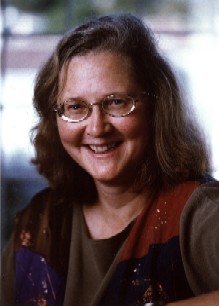
For her advancements in understanding how the cell preserves the ends of chromosomes--telomeres--while replicating its DNA. Her breakthroughs in understanding the protective role of telomeres have increased our understanding of aging and cancer.
Elizabeth Blackburn's work created a new field in molecular biology--the molecular description of telomeres--that has outstanding implications for disease and aging. Her contributions have sparked an explosion of research in biological aging and cancer. An understanding of telomeres, for example, may one day hold the key to stabilizing cancer cells.
Dr. Blackburn received her B.Sc. in 1970 and M.Sc. in 1972, both in biochemistry, from the University of Melbourne, in her native Australia. She received her Ph.D. in 1975 from the University of Cambridge, England, and did postdoctoral work in molecular and cell biology at Yale University. After spending 13 years on the faculty at the University of California, Berkeley, she moved to the University of California, San Francisco, where she has held a professorship for the past 15 years, currently in two departments--biochemistry and biophysics, and microbiology and immunology.
Among her many awards are the National Academy of Science Award in Molecular Biology, the Australia Prize, the 1999 California Scientist of the Year Prize, the American Cancer Society Medal of Honor, the General Motors Cancer Research Foundation Alfred P. Sloan Award, the 26th Annual Bristol-Meyers Squibb Award for Distinguished Achievement in Cancer Research, and the Dr. A.H. Heineken Prize for Medicine. She has been elected to the Institute of Medicine and serves as a fellow of the Royal Society of London, a foreign associate of the National Academy of Sciences, and president of the American Society for Cell Biology.
Information as of April 2005

